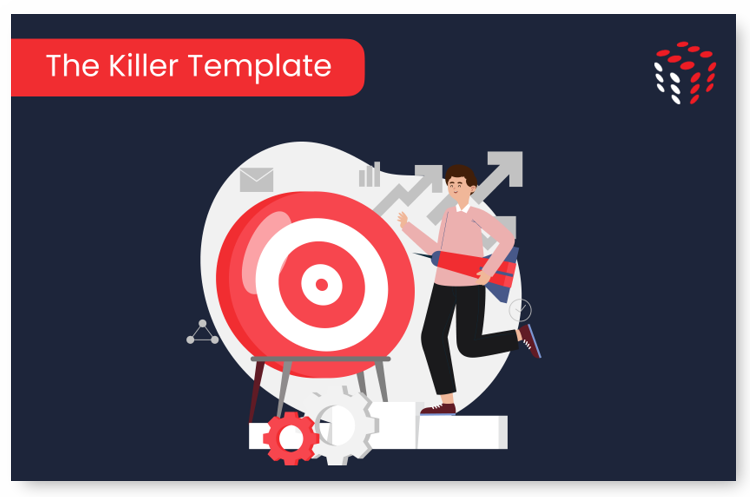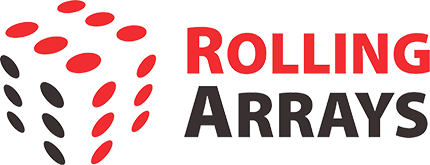
Whitepaper
OKRs and KPIs: Understanding the Differences and Choosing the Right Framework
The Killer Templates Included

Table of Contents

The Killer Templates
Include templates for defining OKRs and KPIs that organisations can copy and adapt for their use. For example, a template for writing a SMART objective, key results, or a KPI definition.
RESOURCES > WHITEPAPER > OKRs and KPIs: Understanding the Differences and Choosing the Right Framework
A performance review is a valuable tool for enhancing the performance and potential of your employees. It allows you to evaluate how well your employees are meeting their work expectations based on the feedback from their managers. A performance review can also help you identify the strengths and weaknesses of your employees, provide constructive feedback, and set SMART goals for future improvement.
By implementing effective performance management practices in your HR operations, you can align your employees’ performance with your organisational objectives and measure your progress and success. Two common frameworks for performance management are objectives and key results (OKR) and key performance indicators (KPIs).
This whitepaper will compare and contrast these two frameworks and help you decide which is more suitable for your organisation. We will also provide some tips and best practices for using these frameworks to optimise your performance management process.
What is a KPI?
KPIs, or Key Performance Indicators, show how well an organisation meets its objectives. They help evaluate the performance of different levels and departments, such as management, human resources, and marketing. KPIs help organisations achieve their goals and monitor the effectiveness of their strategies. They also support decision-making and prioritisation by highlighting what’s important. The choice of KPIs depends on various factors, such as the organisation’s industry, department, and objectives. Once chosen, these KPIs are tracked using a reporting tool like the balanced scorecard. This helps everyone in the organisation to see how the organisation is doing and take appropriate action.
An effective KPI has specific characteristics. For example, it should be numerical, aligned with business processes and objectives, and actionable to influence the desired change. The SMART concept helps create a KPI, which means that the purpose should be specific, the progress should be measurable, the goal should be attainable and relevant to the organisation, and the deadline should be tied to the objective.
Advantages KPI
KPIs are useful tools for measuring performance and achieving various benefits. Some of the advantages of using KPIs as performance measures are:
- They improve communication on performance issues by providing precise and consistent information to all stakeholders.
- They motivate employees to exceed performance expectations by setting challenging but realistic targets and rewarding achievements.
- They focus on critical areas such as cost reduction and quality improvement by identifying the key drivers of success and the areas that need improvement.
- They clarify the current business position by showing the current status of performance against the objectives and the gaps that need to be closed.
- They serve as a reference for future or past comparisons by enabling benchmarking and trend analysis of performance over time and across different units or organisations.
- They track progress by showing the changes in performance over time and the impact of actions taken to improve performance.
- They assess the effectiveness of policies and processes in improving operations by showing the relationship between inputs, outputs, and outcomes and the contribution of each factor to the overall performance.
- They help reduce conflicts arising from poorly defined goals by establishing clear and agreed-upon criteria for measuring and evaluating performance.

Goals that Sizzle, Not Fizzle
Craft SMART Objectives with This Killer Template
The Key Benefits:
- Crystal Clarity
- Measurable Progress
- Aligned Actions
- Time-Bound Triumph
Disadvantage KPI
KPIs also have some limitations and challenges that need to be considered. Some of the drawbacks associated with KPIs are:
- They may not provide actionable insights in real-time. KPIs are often based on historical data that may not reflect current or future trends. Due to data collection and analysis delays, they may also need to catch up to the actual performance. This can limit the ability of managers and employees to respond quickly and effectively to changing conditions and opportunities.
- They may need to reflect on team improvements daily. KPIs are usually set at the individual, departmental, or organisational level. Still, they may need to capture the performance of teams or cross-functional groups that work together on projects or tasks. Teams may need to develop KPIs that reflect their collective goals and contributions and monitor them regularly to ensure alignment and collaboration.
- They can take time to understand and implement effectively. KPIs require a clear understanding of the business objectives, the key drivers of performance, and the data sources and methods for measuring and reporting them. They also need a commitment from all stakeholders to use them consistently and objectively. As a result, developing and implementing KPIs can be a complex and time-consuming process that may involve trial and error and continuous improvement.
- Measuring metrics that are easy to track but not necessarily relevant to the business objectives is a common mistake when using KPIs. Instead, KPIs should be aligned with the strategic goals and priorities of the organisation and reflect the outcomes that matter most to the customers and stakeholders. Measuring convenient or available metrics but not directly linked to the value proposition or the organisation’s competitive advantage can lead to wasted resources, misaligned incentives, and poor decisions.
KPI Examples
KPIs are specific to each department and industry, depending on their goals and priorities. However, they should reflect the outcomes that are most important for the success of the department and the organisation. Here are some examples of KPIs by department, along with their definitions and explanations:
Customer Success KPIs Examples:
- Average response time: A customer service representative must reply to a customer inquiry or issue. A lower average response time indicates faster and more efficient customer service. A possible KPI for this metric is to reduce the average response time from 5 to 3 minutes.
- Customer satisfaction score (CSAT): The percentage of customers who rate their satisfaction with a product, service, or interaction as positive. A higher CSAT score indicates a higher level of customer satisfaction and loyalty. A possible KPI for this metric is to increase the CSAT score from 80% to 90%.
Sales KPIs Examples:
- Gross profit margin: The percentage of revenue after deducting the cost of goods sold. A higher gross profit margin indicates a more profitable and competitive sales strategy. A possible KPI for this metric is to increase the gross profit margin by 30% this quarter.
- Sales growth: The percentage increase or decrease in sales revenue over a given period. Positive sales growth indicates an expanding and successful sales strategy. A possible KPI for this metric is to achieve a sales growth of 20% this quarter.
HR KPIs Examples:
- Overall overtime hours: The total number of hours employees work beyond their regular working hours. A lower overall overtime hour indicates a more balanced and productive workforce. A possible KPI for this metric is to reduce the overall overtime hours by 50% this quarter.
- Employee retention rate: The percentage of employees who remain with the organisation over a period. A higher employee retention rate indicates a more satisfied and loyal workforce. A possible KPI for this metric is to increase the employee retention rate from 85% to 95%.
How to Implement KPI?
- KPIs are powerful tools for performance management, but they require careful planning and implementation. Here are some steps to implement KPIs effectively:
- Identify the goals and objectives of your organisation. Start by clarifying the vision, mission, and values of your organisation. Then, identify the strategic goals and objectives that support your vision and mission. These goals and objectives should be SMART: specific, measurable, achievable, relevant, and time-bound.
- Determine which KPIs are relevant to your organisation’s goals and objectives. Then, based on your goals and objectives, select the KPIs that will help you measure and evaluate your performance. Choose KPIs that are relevant to your industry, department, and function. Avoid choosing too many or too few KPIs. A good rule of thumb is to have between 3 to 5 KPIs per goal or objective.
- Define the KPIs that you want to track and measure. For each KPI, define its name, definition, formula, data source, frequency, and unit of measurement. Make sure that the KPIs are clear, consistent, and comparable. Use standard definitions and formulas whenever possible. Avoid using vague or ambiguous terms or metrics.
- Assign ownership of each KPI to a specific person or team. For each KPI, assign a responsible person or group responsible for collecting data, monitoring performance, and reporting results. This person or group should have the authority, resources, and skills to manage the KPI effectively. They should also communicate with other stakeholders involved or affected by the KPI.
- Establish a baseline for each KPI to measure progress over time. A baseline is the starting point or reference value for a KPI. It represents the current or past performance of the KPI before any improvement actions are taken. Establishing a baseline helps you understand where you are now and how far you must go to achieve your targets. You can use historical data, industry benchmarks, or best practices to establish a baseline for each KPI.
- Set targets for each KPI that are achievable and aligned with your organisation’s goals and objectives. A target is the desired value or level of performance for a KPI. It represents where you want to be in the future. Setting targets helps you focus your efforts and resources on achieving your goals and objectives. You can use SMART criteria to set targets for each KPI. Ensure the targets are realistic, challenging, and consistent with your organisation’s strategy and priorities.
- Establish a system for collecting data and reporting on KPIs regularly. A system is a process or method for collecting data and reporting on KPIs. It includes the tools, techniques, and procedures for gathering, analysing, visualising, and communicating data and results. Establishing a system helps you ensure the accuracy, reliability, timeliness, and accessibility of data and information on KPIs. You can use various tools such as spreadsheets, dashboards, scorecards, or software applications to collect data and report on KPIs regularly
What is an OKR?
OKR stands for Objectives and Key Results. It is a goal-setting framework that helps individuals, teams, and organisations set clear and measurable goals and track their outcomes. OKR is a powerful framework that enables businesses to plan, execute, and monitor their progress towards their strategic goals. Unlike KPIs, which are mainly data-driven and focus on performance indicators, OKR combines aspiration and data and focuses on outcomes. Global brands like Google and Intel have used the OKR methodology to achieve remarkable results, and businesses of all sizes across various industries now adopt it.
Advantages OKR?
OKR can bring many benefits to your business if implemented correctly. Some of these benefits are:
- Providing a clear direction for your team and company as a whole. OKR helps you define and communicate your vision, mission, and strategy to your employees and stakeholders. It also lets you align your team and company objectives with your customers’ needs and expectations.
- You were aligning and linking your employees to your corporate goals. OKR helps you create a shared sense of purpose and direction among your employees. It also enables you to cascade your corporate goals to the team and individual levels, ensuring everyone is working towards the same outcomes.
- Achieving measurement, accountability, and transparency. OKR helps you measure and track your progress and results using data and evidence. It also enables you to hold yourself and others accountable for delivering on your commitments and responsibilities. It also helps you share your progress and results with others, creating a culture of transparency and trust.
- Enhancing productivity by concentrating on objectives. OKR helps you prioritise and focus on the most critical and impactful objectives to drive your business forward. It also lets you avoid distractions and waste resources on irrelevant or low-value activities.
- Fostering innovation. OKR encourages you to set ambitious and challenging objectives that stretch your capabilities and inspire you to think creatively and innovatively. It also enables you to experiment and learn from failures, fostering a culture of continuous improvement and growth.
- Making more informed decisions. OKR helps you collect and analyse data and feedback on your performance and outcomes. It also lets you identify the gaps, risks, and opportunities affecting your objectives. It also helps you adjust your actions and strategies based on the data and feedback, making more informed and effective decisions.
- Analysing the underlying reasons why objectives are not met. OKR helps you understand the root causes of why you did not achieve your objectives or why you achieved them differently than expected. It also enables you to learn from your mistakes and successes, identifying the best practices and areas for improvement.
- Tracking regular progress towards goals. OKR helps you regularly monitor and review your progress and results, such as weekly, monthly, or quarterly. It also lets you celebrate your achievements and recognise your efforts, motivating you to keep working towards your goals.
Disadvantage OKR
OKR is not a perfect framework; it has some drawbacks and challenges that must be considered and addressed. Some of these drawbacks and challenges are:
- The overall relationship between OKRs isn’t apparent. For example, OKRs are supposed to be aligned and linked across different levels and departments in the organisation, but this may not be clear or visible to everyone. This can create confusion and misunderstanding about how each OKR contributes to the overall strategy and vision of the organisation.
- The “how” can be too prescriptive for some people. OKRs are meant to define the “what” and the “why” of the objectives but not the “how” of achieving them. However, some people may need more guidance and direction in achieving their objectives. This can limit their autonomy and creativity and make them feel micromanaged or controlled.
- OKRs designed from the bottom up can need more company-wide alignment. OKRs can be created from the top down, bottom up, or both directions. However, if OKRs are designed mainly from the bottom up, they may not reflect the strategic priorities and goals of the organisation. This can lead to misalignment and conflict between different teams and departments.
- People can set too many OKRs. They are meant to focus on the most critical objectives. Some people may develop too many OKRs that are too broad or too granular. This can dilute their focus and distract them from many tasks and activities.
OKR Examples
Finance and accounting OKR examples
Objective: Eliminate accounting mistakes Key results-
- Reduce accounting errors by 50% by Q4. This key result will help measure the quality and accuracy of the accounting processes and reports.
- Implement a new accounting software by Q3. This key result will help improve the efficiency and reliability of the accounting systems and tools.
Sales OKR examples
Objective: Increase net sales to $2 million from $1.75 million. Key results-
- Increase sales by 10% in Q1. This key result will help measure the growth and revenue of the sales activities and results.
- Launch a new product line by Q2. This key result will help expand the product portfolio and reach new customers and markets.
Marketing OKR examples
Objective: Create excitement about our brand in the digital space. Key results-
- Increase website traffic by 20% in Q1. This key result will help measure the visibility and awareness of the brand online.
- Launch a social media campaign by Q2. This key result will help engage and interact with the target audience and generate leads and conversions.
Development OKR examples
Objective: Improve website performance Key results:
- Reduce website load time by 50% by Q4. This key result will help measure the speed and responsiveness of the website.
- Implement a new website design by Q3. This key result will help enhance the appearance and functionality of the website.
How to Implement OKR?
Here are some steps to implement OKRs effectively:
- Start and adapt: The best way to learn how to use OKRs is to use them. You don’t have to get everything right from the beginning. You can start with a pilot project or a small team and learn from your experience. You can also adapt the OKR framework to suit your organisation’s culture and needs. For example, you can choose the number and type of OKRs, the level of alignment and autonomy, and the frequency and format of reviews.
- Set an ultimate goal: To optimise organisational alignment, you must have a clear and compelling ultimate goal that your organisation will strive to achieve. This goal should reflect your vision, mission, and values. It should also be inspiring and challenging for your employees and stakeholders. For example, Google’s ultimate goal is to “organise the world’s information and make it universally accessible and useful”.
- Establish a cadence: The proper tempo is critical to successfully implementing the OKR framework. Cadence refers to the time frame and rhythm of setting, reviewing, and updating OKRs. You must choose a cadence that works for your organisation and objectives. For example, a typical tempo is to set annual OKRs for the organisation and quarterly OKRs for the teams and individuals. You must also regularly review your OKRs, such as weekly or monthly, to monitor progress and make adjustments.
- Set company and team OKRs: Once you have established your ultimate goal and cadence, you are ready to start setting company-wide OKRs. These OKRs should be aligned with your ultimate goal and strategic priorities. They should also be SMART: specific, measurable, achievable, relevant, and time-bound. After setting company-wide OKRs, you must cascade them down to the team and individual levels. These OKRs should be aligned with the company-wide OKRs but also reflect each team and individual’s specific goals and contributions. You can use a bottom-up, top-down, or hybrid approach to set group and individual OKRs.
- Measure and iterate: After setting your OKRs, you need to measure your progress and results regularly using data and feedback. You need to track the key results (the outcomes) and the initiatives (the actions) that drive them. You must also review your OKRs periodically, such as quarterly or annually, to evaluate your performance and achievements. You need to celebrate your successes and recognise your efforts. You also need to learn from your failures and challenges. You need to identify the best practices and areas for improvement. You must also iterate your OKRs based on changing conditions and opportunities.
KPI vs OKR
Similarities
Objectives and Key Results (OKRs) and Key Performance Indicators (KPIs) are tools used to measure progress towards goals. They have some similarities, such as:
- They are both specific, measurable and clear. They use precise and quantifiable metrics to define and track the desired outcomes. For example, an OKR could be “Increase customer retention rate by 10% by Q4”, and a KPI could be “Customer retention rate”.
- You can have KPIs or OKRs for organisations, teams, departments, positions, projects or individuals. They can be applied at different levels and scopes in the organisation, depending on the goals and needs of each unit or person. For example, an organisation could have an OKR of “Become the market leader in our industry by 2025” and a KPI of “Market share”.
- They require users to prioritise a few of each essential criterion. They avoid setting too many or too few objectives or indicators that could dilute the focus or overwhelm the users. A common practice is to have eight to 12 KPIs and three to five key results per objective.
- They can help you manage an organisation by aligning stakeholders around clear measures of success and well-defined targets. They can create a shared vision and direction for the organisation and ensure everyone is working towards the same outcomes. They can also foster collaboration and communication among different organisational units and persons.
Differences
However, there are some differences between OKRs and KPIs. Some of the differences are:
- Generally speaking, KPIs have more reasonable goals, while OKR projects are more aggressive and ambitious. KPIs reflect the current or expected performance of the organisation or unit based on historical data, industry benchmarks, or best practices. OKRs challenge the organisation or team to stretch its capabilities and achieve extraordinary results based on aspirational vision, mission, or values. For example, a KPI could be “Increase customer satisfaction score by 5% by Q4”, and an OKR could be “Delight our customers with exceptional service and quality by Q4”.
- In addition, OKRs define a goal with a set of metrics, while KPIs can be part of an OKR’s Key Results or standalone performance indicators. OKRs have two components: an objective (the goal) and key results (the metrics). The objective is a qualitative statement that describes what you want to achieve. The key results are quantitative measures that show how you will reach the objective. KPIs are single metrics that indicate the performance of a process, activity, or outcome. KPIs can be used as key results in OKRs to measure progress towards the objective. They can also be used independently of OKRs to monitor performance continuously. For example, an OKR could be “Increase brand awareness in the digital space by Q4” with key results such as “Increase website traffic by 20%”, “Increase social media followers by 50%”, and “Increase online mentions by 100%”. These key results are KPIs that can be tracked separately from the OKR.
Conclusion
Performance evaluations are crucial for success, growth, and stability. They help organisations measure and improve their performance, align their activities with their goals and objectives, and motivate and reward their employees. Key Performance Indicators (KPIs) and Objectives and Key Results (OKRs) are two popular methods that provide valuable insights into performance. However, they have different features and advantages to consider before choosing one.
KPIs are objective and quantifiable metrics that indicate the performance of a process, activity, or outcome. They are based on historical data, industry benchmarks, or best practices. They are easy to define, measure, and track. They help organisations monitor progress and results, identify gaps and opportunities, and make informed decisions. For example, a KPI for a sales team could be “Increase sales revenue by 10% in Q1”.
OKRs are abstract and qualitative statements describing what an organisation or unit wants and how it will achieve it. They are based on aspirational vision, mission, or values. They are challenging to define, measure, and track. They help organisations set ambitious and inspiring goals, foster innovation and creativity, and align and engage employees. For example, an OKR for a marketing team could be “Create excitement about our brand in the digital space by Q4” with key results such as “Increase website traffic by 20%”, “Increase social media followers by 50%”, and “Increase online mentions by 100%”.
OKRs are abstract and qualitative statements describing what an organisation or unit wants and how it will achieve it. They are based on aspirational vision, mission, or values.
They are challenging to define, measure, and track. They help organisations set ambitious and inspiring goals, foster innovation and creativity, and align and engage employees. For example, an OKR for a marketing team could be “Create excitement about our brand in the digital space by Q4” with key results such as “Increase website traffic by 20%”, “Increase social media followers by 50%”, and “Increase online mentions by 100%”.
However, there are some potential risks associated with KPIs and OKRs. For example, employees may become overly focused on the measured statistics of KPIs, potentially neglecting other aspects of their tasks that need to be measured or rewarded. This can lead to tunnel vision, system gaming, or unethical behaviour. On the other hand, OKRs encourage employee engagement and creative thinking but could lead to decreased teamwork if employees become too focused on their objectives. This can lead to silos, conflicts, or duplication of efforts.
A final factor is whether your organisation is willing to invest more resources in implementing OKRs or prefers the lower impact of KPIs. OKRs require more time and resources to design, implement, and monitor than KPIs. They also need more flexibility and adaptability as the objectives and key results may evolve. KPIs require less time and resources to design, implement, and monitor than OKRs. However, they also need less flexibility and adaptability to change as the indicators are more stable and consistent.
About Rolling Arrays
Rolling Arrays has been driving SAP SuccessFactors-led HR Transformation since 2009. The company specialises in SF consulting, implementation, and support and also builds applications to enhance the utility of the SuccessFactors platform. It is committed to designing systems that help its customers to attract, develop and retain talented individuals. In 2021, Rolling Arrays was recognized as one of the top 75 fastest-growing companies in Singapore by The Straits Times & Statista.



Share with your network
Get updates in your inbox